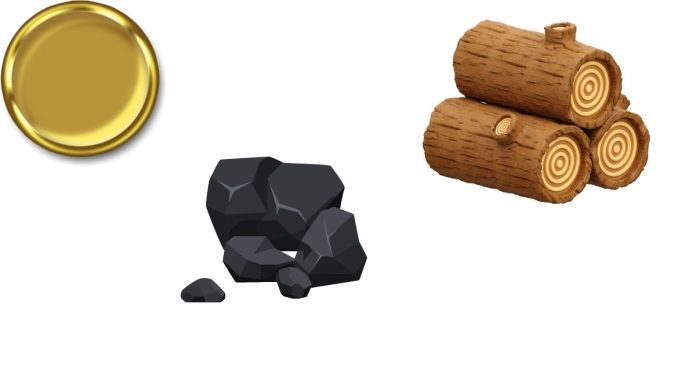Gold
- Non-renewable: Gold is a metal that forms over geological time scales, taking millions of years to accumulate in the Earth’s crust. Once gold is mined and used, there is no way to “renew” it on a human timescale, as it doesn’t regenerate or replenish in nature at a rate that would be usable for future generations. Mining gold also requires energy-intensive processes and has environmental impacts.
Coal
- Non-renewable: Coal is a fossil fuel formed from plant material that accumulated millions of years ago. It is extracted through mining processes. Like gold, coal is finite, and once it is used for energy or other purposes, it is gone. The process of coal formation takes geological time, so it is not replenished at a rate that supports continuous extraction. As a result, coal is considered a non-renewable resource.
Lumber
- Renewable: Lumber is derived from trees, which can be replanted and regrown. As long as forests are managed sustainably (i.e., new trees are planted to replace those cut down), lumber can be replenished. However, if forests are overharvested or not allowed time to regenerate, this renewable resource can become scarce. The rate at which trees grow and forests regenerate depends on factors such as the type of trees, climate, and forest management practices. Sustainable logging practices, such as selective cutting and reforestation, can ensure that lumber remains a renewable resource.
Minerals
- Non-renewable: Minerals, like gold, coal, and other metallic and non-metallic substances, are extracted from the Earth’s crust. These minerals form over millions of years through geological processes, but once they are extracted, they cannot be replaced in a human lifetime. The reserves of many minerals are finite, and as demand increases, the extraction becomes more difficult and environmentally disruptive. Minerals do not regenerate at a rate that would allow for their indefinite use, making them non-renewable resources.
- Gold, coal, and minerals are non-renewable resources because they take millions of years to form, and once extracted, they are gone forever.
- Lumber is renewable because trees can be replanted, and forests can regenerate over time if managed sustainably.
Among the options provided, lumber is the renewable resource.


